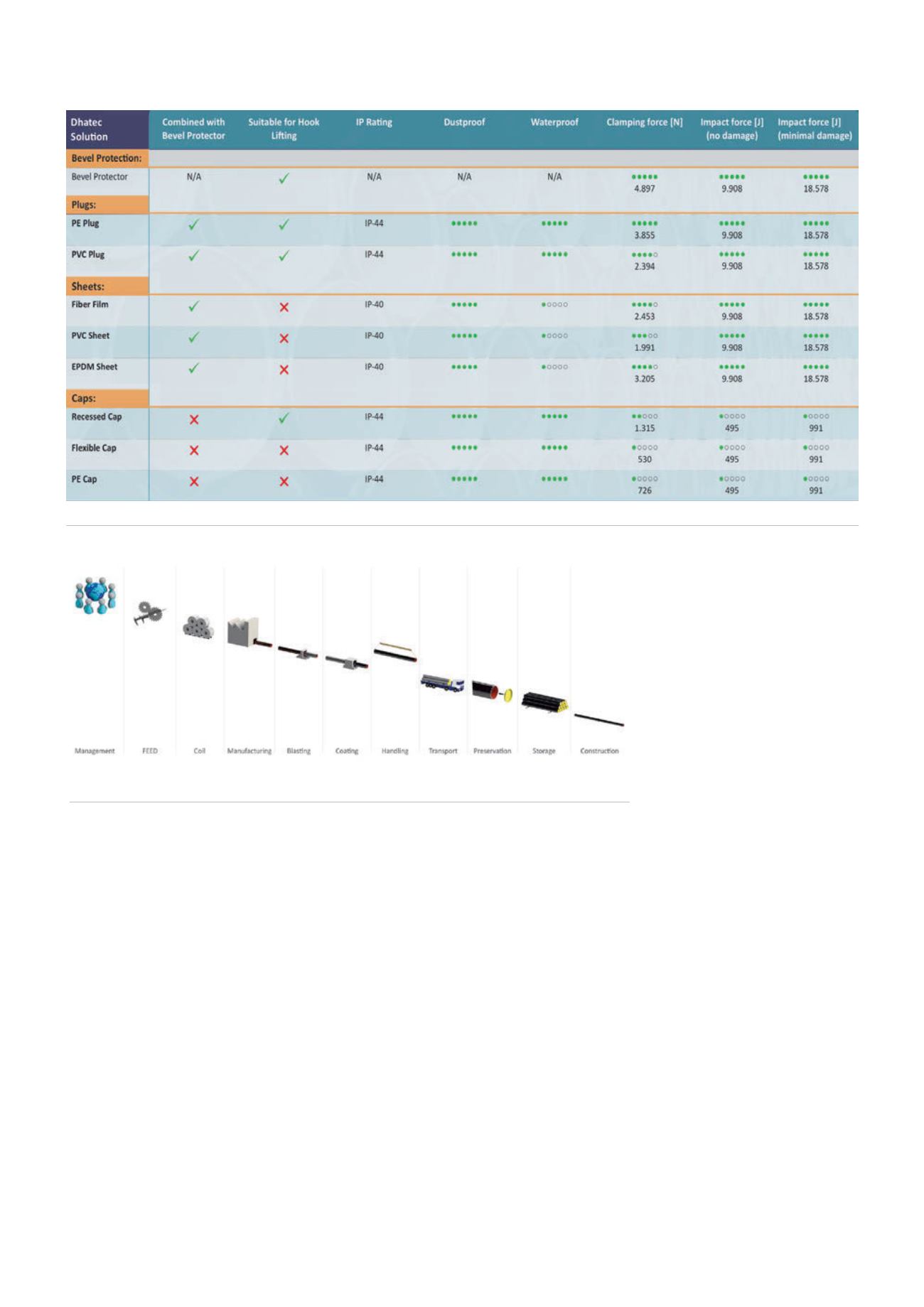
for project managers. The testing performed under the supervision
of TÜV, however, provides a clear overview of the performance of
available pipe-end protection solutions and makes the selection
of the best product easy.
Three tests to establish performance
Dhatec aims to position itself as the number one supplier when
it comes to quality and highly specialised pipe-end protection
products. In order to achieve this, Dhatec has set up a certification
programme with the well-known, independent underwriters
company TÜV-Nord. Dhatec and TÜV have determined a test
programme in which three different tests are conducted. The
tests are performed in order to distinguish the performance of the
different available solutions.
The first test is designed to establish how strong the pipe
closure solution or bevel protector is when clamping itself to
the pipe-end. A high clamping force is needed to guarantee that
the bevel protector or pipe cap will not fall off the pipe during
logistics due to temperature fluctuation, wind load or hook
lifting. The test was designed so
that weights pulled on the product
on the pipe. By adding weights, the
point at which the specific pipe-end
solution was pulled out of the pipe-
end was found. The results range
from as high as 500 kg pulling load
on a bevel protector, to only 50 kg
pulling load on a simple pipe cap.
The second test was done to
establish the level of water and
dust resistance of the different
pipe closure solutions. Tests are
performed according to the norm
IEC 60529 and result in a certain IP
classification. To keep the pipes in good condition during storage
and transport, it is necessary to decide to which degree the pipe
needs to be protected. Is some degree of dust and water in the
pipe allowed? Or is it necessary to seal the pipe completely
against rain and dust? This test resulted in high IP-44 classifications
but also in IP-40 classifications where water can get into the pipe.
The third test was done to establish to which degree the
solution protects the pipe-end against impact forces. As well as
bevelled pipes needing protection against damage, unbevelled
pipes and offshore weld preparations need to be protected
against excessive damage. An offshore impact test tower was used
to drop a weight of 505 kg from various heights until damage was
found on the pipe-end. Differences in results range from drop
heights as high as 3.75 m for combinations with the steel bevel
protector to as low as 0.1 m for simple pipe caps.
All test results have been displayed graphically in a table in
order to easily distinguish the level of protection offered by each
solution. This enables project managers to select the best solution
for their project.
Figure 2.
Pipe closure selection table: making the best selection for pipe-end protection and closure.
Figure 3.
Task environment: line pipe supply chain.
66
World Pipelines
/
SEPTEMBER 2014


